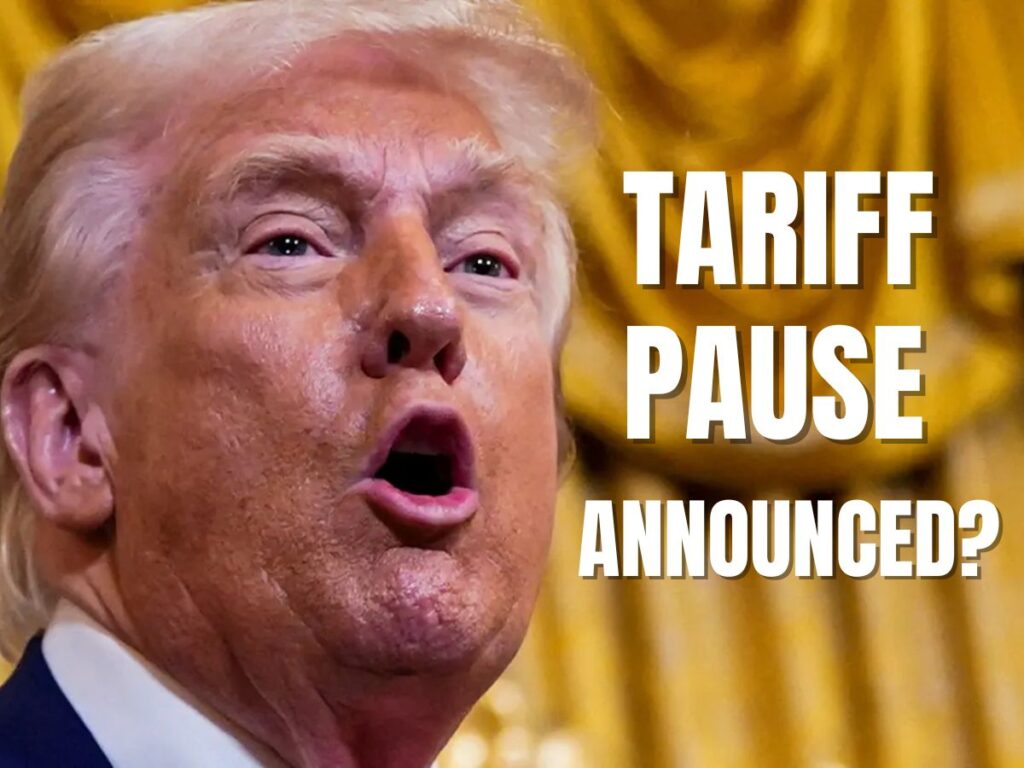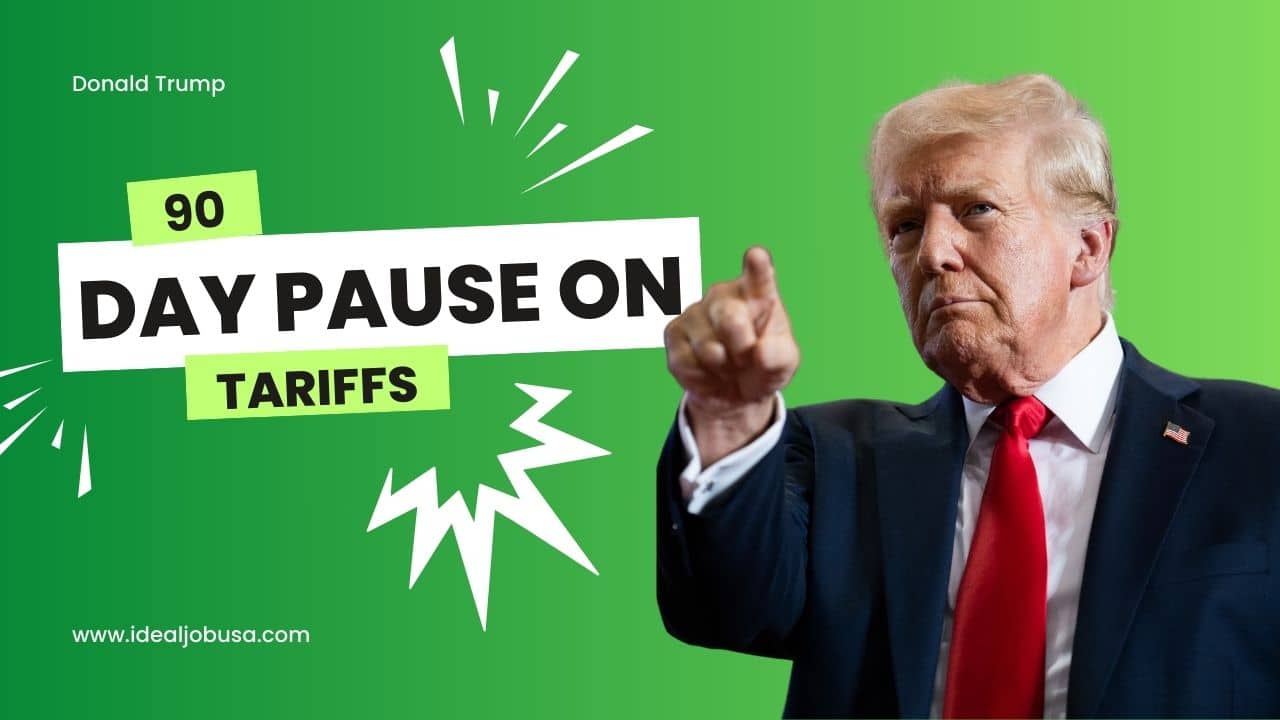In a notable shift in trade policy, the announcement of a 90 day pause on tariffs has generated widespread attention across global markets and industries. This strategic move—temporary but powerful—has implications that extend beyond trade agreements, signaling a potential recalibration in U.S. economic diplomacy. As the world watches and responds, this article unpacks the reasoning behind the pause, its immediate effects, and what lies ahead.
Tariffs, often used as leverage in international negotiations, can have sweeping consequences on prices, production, and global partnerships. A temporary halt presents a moment of reflection and possibly redirection, especially for those sectors previously affected by the long-standing Trump tariffs.
2. Understanding the Tariff Pause
To understand the significance of the tariff pause, it is essential to define what tariffs are and how they function. Tariffs are taxes imposed on imported goods, typically designed to protect domestic industries by making foreign products more expensive. While they may benefit local production, they often lead to higher prices for consumers and potential retaliation from trade partners.
The current 90 day pause on tariffs effectively suspends these import taxes on selected goods for three months. It is not a blanket removal of all tariffs but a focused decision to halt enforcement in specific areas, possibly as a goodwill gesture or as a move to ease economic pressures domestically.
Such a tariff pause provides a temporary cushion for businesses reliant on international supply chains. It also allows governments time to revisit trade terms, negotiate better deals, or re-strategize their economic policies without the pressure of immediate consequences.
3. Why Was the Tariff Pause Announced?

The motivation behind this 90 day pause is rooted in a mix of economic reasoning and political strategy. Several key factors likely influenced the decision:
Economic Considerations
The global economy has been grappling with inflation, disrupted supply chains, and unpredictable commodity pricing. Tariffs have, in many cases, contributed to these challenges by increasing the cost of imported raw materials and finished goods. Pausing these taxes temporarily could help alleviate inflationary pressures and stabilize the domestic market.
Election-Year Strategy
Given that the Trump tariffs have long been a polarizing issue, the tariff pause could be a political calculation. It allows political leaders to appear flexible and responsive while preserving their stance on protecting domestic industries.
International Pressure
Trade partners, especially those with longstanding economic ties to the U.S., may have applied pressure behind the scenes. A tariff pause opens the door to renewed dialogue and potentially more balanced trade agreements.
Ultimately, the 90 day pause serves as a signal—to domestic businesses, global partners, and voters—that there’s room for negotiation and possible recalibration.
4. Market Response to the Pause
Markets are typically quick to respond to changes in policy that affect business costs and trade volumes—and the tariff pause was no exception. Within hours of the announcement, major indexes such as the S&P 500 and Dow Jones Industrial Average reflected an uptick in investor optimism.
Investor Sentiment
Investors welcomed the move, interpreting the tariff pause as a sign of economic softening. It indicated reduced pressure on companies reliant on imported goods, particularly in sectors like automotive, electronics, and manufacturing.
Corporate Response
Large corporations with global supply chains, such as those in tech and industrial goods, reacted positively. The pause allows for smoother import flows, potentially reducing cost burdens and improving earnings forecasts.
Short-Term Surge or Sustainable Growth?
While the market response was largely favorable, analysts remain cautious. A 90 day pause is temporary, and uncertainty remains about what will follow. Still, for now, the markets seem to view the decision as a breath of fresh air amid ongoing economic volatility.
5. Global Reactions and Trade Impact

The tariff pause did not just influence U.S. stakeholders—it sparked significant international reactions. Countries affected by the Trump tariffs, including China, the European Union, and Canada, welcomed the pause, though many remained skeptical about its longevity.
Trade Partners’ Perspective
For nations that had previously faced steep U.S. tariffs, the pause suggests a possible thaw in trade tensions. However, without a clear roadmap beyond the 90-day window, global partners are treating the news with cautious optimism.
Impact on Trade Flow
The temporary easing has already influenced import-export dynamics. Ports have seen an uptick in activity, and shipping companies are preparing for a potential surge in volume during the pause period. This could help re-balance strained global supply chains in the short term.
6. Trump’s Role and Public Communication
The Trump tariffs, initially introduced as part of a broader “America First” agenda, reshaped global trade over the last few years. Though former President Trump is not currently in office, his influence over the Republican Party and trade discourse remains significant.
Political Messaging
In recent public appearances and statements, Trump has doubled down on his commitment to strong trade policies but has also hinted at the need for strategic adjustments. While he has not directly opposed the 90 day pause on tariffs, he frames it as a tactical move that aligns with broader U.S. economic interests.
Legacy and Influence
Trump’s role in shaping today’s tariff landscape cannot be overstated. Any changes—whether a tariff pause or complete policy reversal—must contend with the precedents set during his administration.
7. Media Coverage
The 90 day pause quickly became a major headline across financial and political news platforms. Coverage from CNBC, MarketWatch, and Bloomberg emphasized the potential economic relief, while also analyzing the move through a political lens.
Key Themes in the Media
- Economic Relief: Highlighting how businesses and consumers might benefit from lower prices.
- Political Strategy: Questioning the timing and intent behind the decision.
- Global Diplomacy: Exploring how this pause affects U.S. relationships abroad.
Experts and columnists have called the pause “an economic breather” and “a smart but temporary maneuver.” Though media narratives vary, there is a general consensus that the pause could open doors for larger trade conversations.
8. Future Outlook: What Happens After 90 Days?
The temporary nature of the tariff pause means its greatest impact may lie in what comes next. Will this be a one-off relief period, or a stepping stone toward long-term tariff reform?
Possible Scenarios
- Extension of the Pause: If the benefits are tangible and political will remains strong, the pause may be extended.
- Tariffs Reinstated: Should negotiations fail or political priorities shift, the Trump tariffs could return in full force.
- Comprehensive Policy Reform: A best-case scenario may involve restructured trade deals that reduce dependency on tariffs altogether.
Business Strategy and Planning
Many companies are using this 90-day window to reassess supply chains, renegotiate with vendors, and optimize logistics. If the pause continues or turns into a more permanent change, it could lead to sustained economic growth and better international relations.
9. Conclusion
The 90 day pause on tariffs is a bold, strategic decision that carries significant implications for the economy, businesses, and international trade. While temporary, this tariff pause offers valuable insights into current political and economic priorities.
It reflects a willingness to adapt and a recognition of the toll that prolonged tariff enforcement can have on inflation, trade relationships, and corporate growth. The markets have reacted positively, businesses are cautiously optimistic, and global partners are watching closely.
The real story will unfold in the months ahead. Will this 90 day pause become a bridge to a new era in trade policy—or a brief calm before tariffs return in full force? One thing is clear: in a global economy as interconnected as today’s, even temporary decisions can leave lasting impacts.


